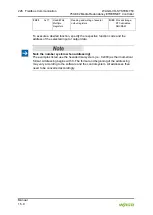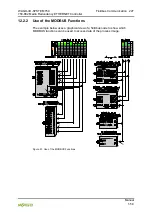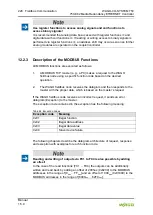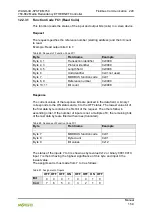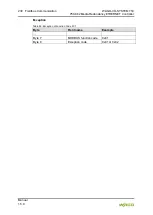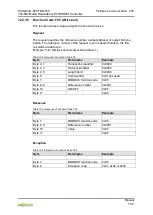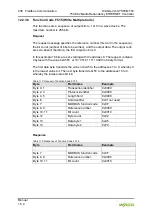
224 Fieldbus Communication
WAGO-I/O-SYSTEM 750
750-882 Media Redundancy ETHERNET Controller
Manual
1.5.0
12.2 MODBUS Functions
12.2.1 General
MODBUS is a manufacturer-independent, open fieldbus standard for diverse
applications in manufacturing and process automation.
The MODBUS protocol is implemented according to the current Internet Draft of
the IETF (Internet Engineering Task Force) and performs the following functions:
•
Transmission of the process image
•
Transmission of the fieldbus variables
•
Transmission of different settings and information on the coupler/controller
The data transmission in the fieldside takes place via TCP and via UDP.
The MODBUS/TCP protocol is a variation of the MODBUS protocol, which was
optimized for communication via TCP/IP connections.
This protocol was designed for data exchange in the field level (i.e. for the ex-
change of I/O data in the process image).
All data packets are sent via a TCP connection with the port number 502.
MODBUS/TCP segment
The general MODBUS/TCP header is as follows:
Table 85: MODBUS/TCP Header
Byte
0
1
2
3
4
5
6
7
8 … n
Identifier
(entered by
receiver)
Protocol-identifier
(is always 0)
Length field
(High byte, low
byte)
Unit identifier
(Slave
address)
MODBUS
function
code
Data
Additional Information
The structure of a datagram is specific for the individual function. Refer to the
descriptions of the MODBUS Function codes.
For the MODBUS protocol 15 connections are made available over TCP. Thus it
allows digital and analog output data to be directly read out at a fieldbus node
and special functions to be executed by way of simple MODBUS function codes
from 15 stations simultaneously.
For this purpose a set of MODBUS functions from the Open MODBUS/TCP
specification is realized.

















